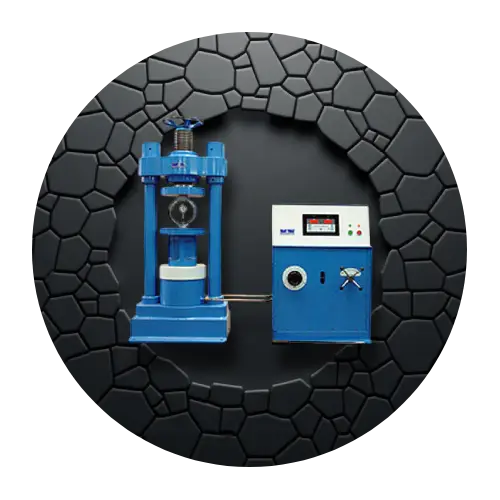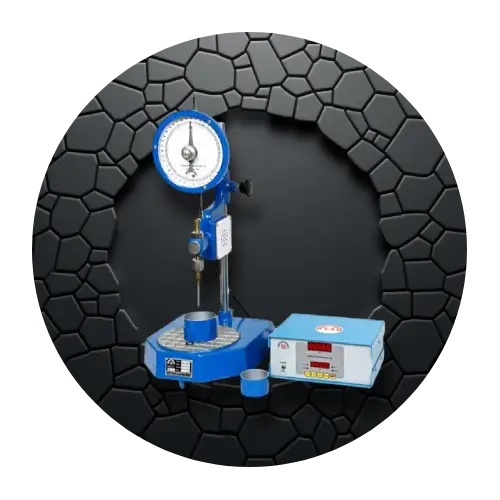Close
ESE-010-Sand Pouring Cylinder


| Attribute | Details |
|---|---|
| Material | Stainless Steel |
| Color | Blue |
| Automation Grade | Manual |
| Usage/Application | Sand Pouring |
| Finishing | Yes |
| Weight | Standard |
Product description
Product Overview of Sand Pouring Cylinder
- The Sand Pouring Cylinder is a high-precision device supplied by a reputed Concrete Testing Equipment Manufacturer in India.
- Constructed using high-quality stainless steel, it ensures long-lasting performance, durability, and resistance to corrosion.
- As a leading Concrete Testing Equipment Manufacturer, we design this cylinder for accurate determination of the in-situ density of soil using the sand replacement method.
- This apparatus is widely used in geotechnical and civil engineering projects, proving the expertise of a trusted Concrete Testing Equipment Manufacturer.
- Proudly Made in India, the Sand Pouring Cylinder showcases engineering excellence from a certified Concrete and Soil Testing Equipment Manufacturer.
Technical Specifications of Sand Pouring Cylinder
- Material: High-grade Stainless-Steel construction by an expert Concrete Testing Equipment Manufacturer.
- Color: Blue, powder-coated finish for durability, provided by a trusted Concrete Testing Equipment Manufacturer.
- Automation Grade: Manual operation designed for field and lab use, crafted by a reliable Concrete Testing Equipment Manufacturer.
- Usage/Application: Specifically designed for Sand Pouring Tests, supplied by a professional Concrete Testing Equipment Manufacturer.
- Finishing: Premium polished surface ensures resistance against wear and tear, engineered by a top Concrete Testing Equipment Manufacturer.
- Weight: Standard lightweight design for portability, manufactured by a reputed Concrete Testing Equipment Manufacturer.
- Country of Origin: Proudly Made in India by an ISO-certified Concrete Testing Equipment Manufacturer.
Key Features of Sand Pouring Cylinder
- Durable stainless-steel construction supplied by a leading Concrete Testing Equipment Manufacturer.
- Manual operation for simplicity and reliability, engineered by an expert Concrete Testing Equipment Manufacturer.
- Precision design ensures accurate sand replacement method results from a trusted Concrete Testing Equipment Manufacturer.
- Lightweight, portable, and easy to handle, provided by a reliable Concrete Testing Equipment Manufacturer.
- Long service life with minimal maintenance, crafted by a professional Concrete Testing Equipment Manufacturer.
Applications of Sand Pouring Cylinder
- Widely used in geotechnical investigations, supplied by a reputed Concrete Testing Equipment Manufacturer.
- Essential for determining in-situ soil density using the sand replacement method, offered by an expert Concrete Testing Equipment Manufacturer.
- Valuable in civil engineering construction projects, provided by a trusted Concrete Testing Equipment Manufacturer.
- Commonly used in soil mechanics laboratories and field testing, manufactured by a certified Concrete Testing Equipment Manufacturer.
- Suitable for roadwork, foundations, and infrastructure projects, designed by a professional Concrete Testing Equipment Manufacturer.
Why Choose Engineering Solutions Equipment as a Concrete Testing Equipment Manufacturer
- Trusted as a Concrete Testing Equipment Manufacturer, we ensure superior quality and accuracy in every product.
- Recognized as both a Concrete Testing Equipment Manufacturer and Soil Testing Equipment Manufacturer, offering versatile testing solutions.
- Our Sand Pouring Cylinder meets national and international testing standards.
- We provide durable, reliable, and affordable instruments trusted by engineers and research labs.
- As a leading Concrete Testing Equipment Manufacturer, we offer unmatched after-sales service and technical support.












